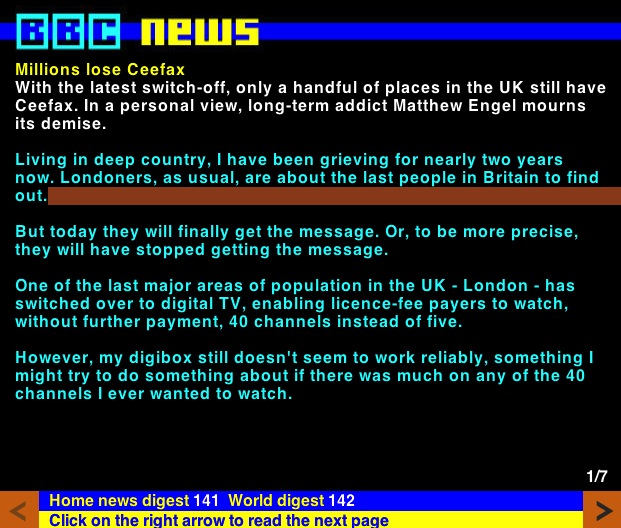Ceefax, the world’s first teletext service, has been switched off by the BBC. Farewell, old friend, you were just the ticket for checking share prices, planning TV viewing and arranging a holiday. Before the internet, Ceefax was all we had.
Now, it is gone for ever. Ars Technica has published a fitting eulogy:
Ceefax was first developed by the BBC as a way to transmit subtitles using unused parts of the broadcast spectrum, but researchers at the broadcaster realised that the same technology could just as easily handle full pages of text. That led to the first test transmissions in 1974, with a formal rollout in 1976. Early television sets needed a special chip to be able to receive and store the information as it was broadcast—many of those reading this will remember waiting for a page to refresh, watching the ticker at the top right which slowly crept upwards as each page was rebroadcast with new information.
The new system was fast and flexible enough to be used for breaking news, along with other information (like stocks or the weather) where there was a need for regular updates. It was only a one-way system, though, which limited its uses, and as computers with Internet access became more common Ceefax went from a necessity to a curiosity—something you’d use to check the football scores when at a relative’s house.
by Mike Evans, 22 October 2012

